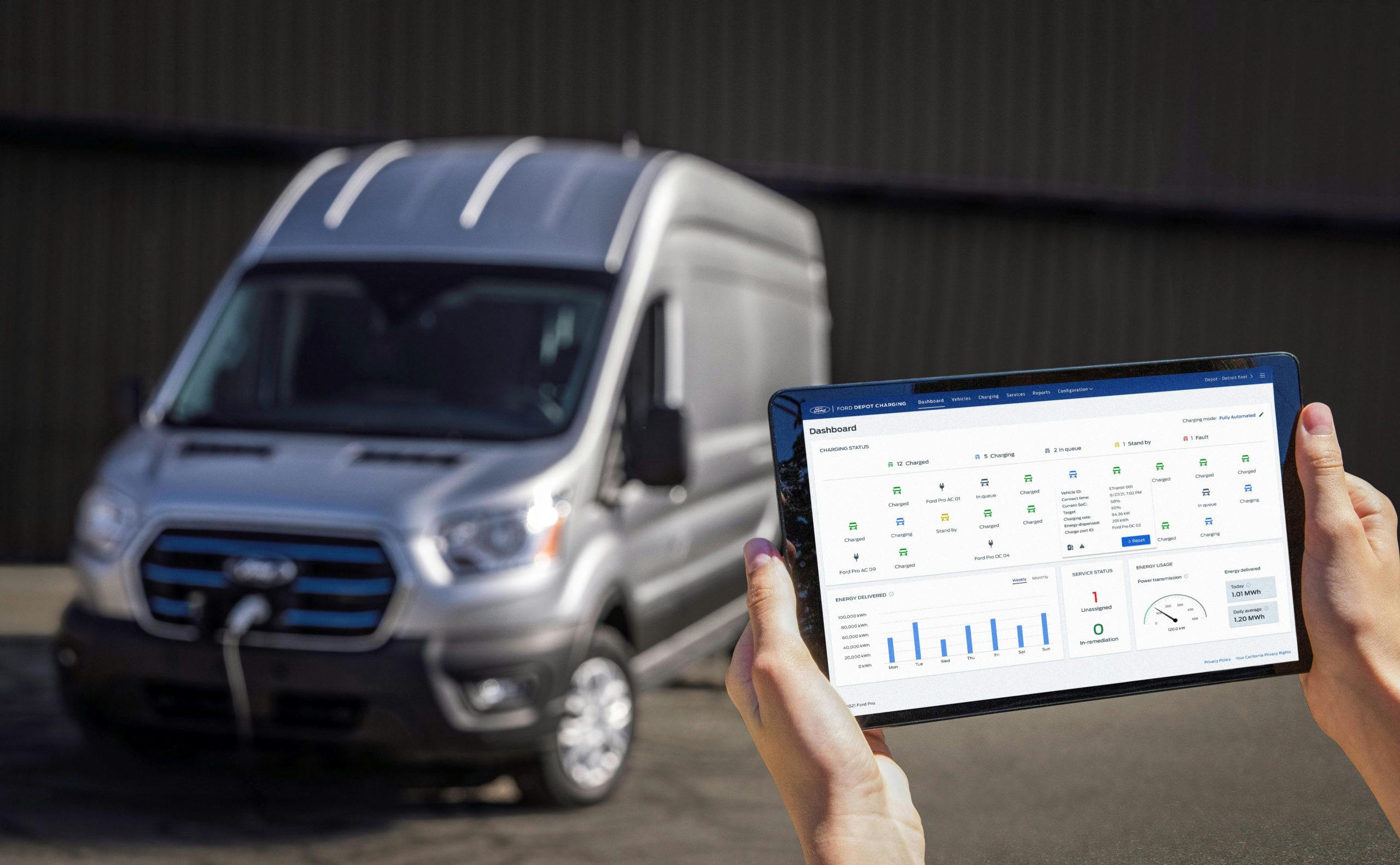Ford Pro, Ford’s commercial arm, announced that it’s launching a program called Ford Pro Charging to provide businesses with a comprehensive solution for charging battery-electric vehicles. The Blue Oval aims to minimize the complexity of switching from internal combustion to an all-electric fleet by providing software and commercial hardware infrastructure to support charging and energy management.
Ted Cannis, CEO of Ford Pro noted that customers want the E-Transit and F-150 Lightning Pro in their fleet but they want to know how to charge and operate them efficiently once they’re in the fleet. “Ford Pro Charging is an industry-first solution that is focused on helping our customers plan for, operate and deploy charging solutions so they can reduce operating costs and improve efficiency,” said Cannis. Charging and energy management are key to operating electric commercial vehicles because they spend extended time periods on the road and frequently with heavy loads.
Ford Pro Charging aims to help businesses understand their fleet operations and help them plan vehicle operations based on energy consumption and demand. Data streams from connected Ford commercial vehicles are being used to predict and manage the operational needs of EV fleets. Software is used to analyze how each fleet operates and can help manage vehicle charging schedules based on the data acquired. Additionally, it can also determine the best times to charge based on energy rates.
“Our current fleet of connected vehicles allow us to learn from existing fleet behaviors so we can build the right infrastructure and the right charge management software,” said Muffi Ghadiali, Head of Ford Pro Charging. “Ford Pro Charging accounts for a multitude of variables and controls each charge station precisely to optimize energy costs and ensure vehicle uptime.” Ford Pro Charging support starts on the first day you take delivery of an electric commercial vehicle and continues through every step of the process. It will also help create the ideal charging site that can scale with fleet operations while working together with local utility partners on energy and infrastructure needs. This is essentially a turnkey solution that includes site review and design consultations to determine the type of charges needed, how many you need, and install commercial-grade charging components.
By 2030, Ford Pro expects the depot charging industry to grow to around 900,000 electric full-size trucks and vansin the U.S. alone. For those that don’t want an on-site charging depot or prefer to use the public infrastructure, they’ll have access to 70,000 public charging ports with over 3,200 DC chargers as part of the growing Blue Oval Charging Network. Ford Pro also offers a home charger installation for fleet drivers that need to charge overnight. This also comes with software for tracking and reporting energy use to make reimbursement easy.
The Ford Pro Charging program isn’t limited to Ford vehicles because it is designed to operate with models from a wide range of manufacturers and size classes including forklifts and heavy-duty trucks. The software used enables remote monitoring and management and can disclose charge rates, optimal charging tires, and service alerts. Together with Ford Pro E-Telematics, businesses can get the most out of their EV fleet with features like battery preconditioning to maximize range and performance. Businesses will be able to manage their operations using a single account that gives them access to the full Ford Pro Charging management and E-Telematics suite.
Since the transition to a full EV fleet will take some time, Ford Pro provides a single solution for managing a mixed fleet of internal combustion and electric vehicles. The company has found that commercial customers turn over 10 to 15 percent of their fleets per year, which will lead to long periods with both types of propulsion. The solutions and services Ford Pro offers aim to ensure that the transition happens smoothly and that businesses can continue to operate seamlessly as they gradually switch to EVs.

